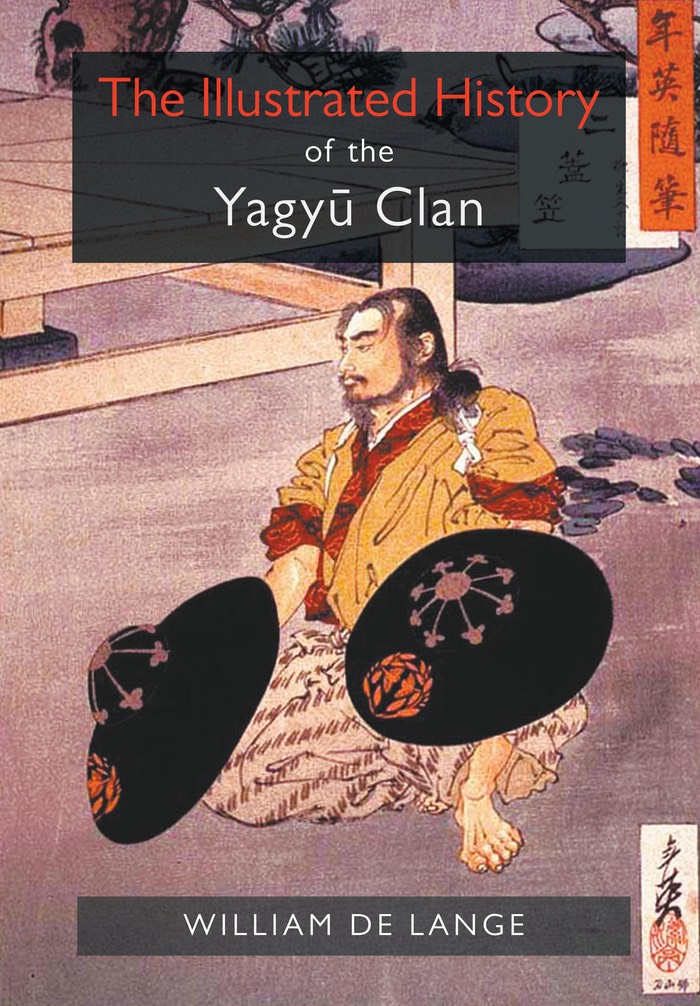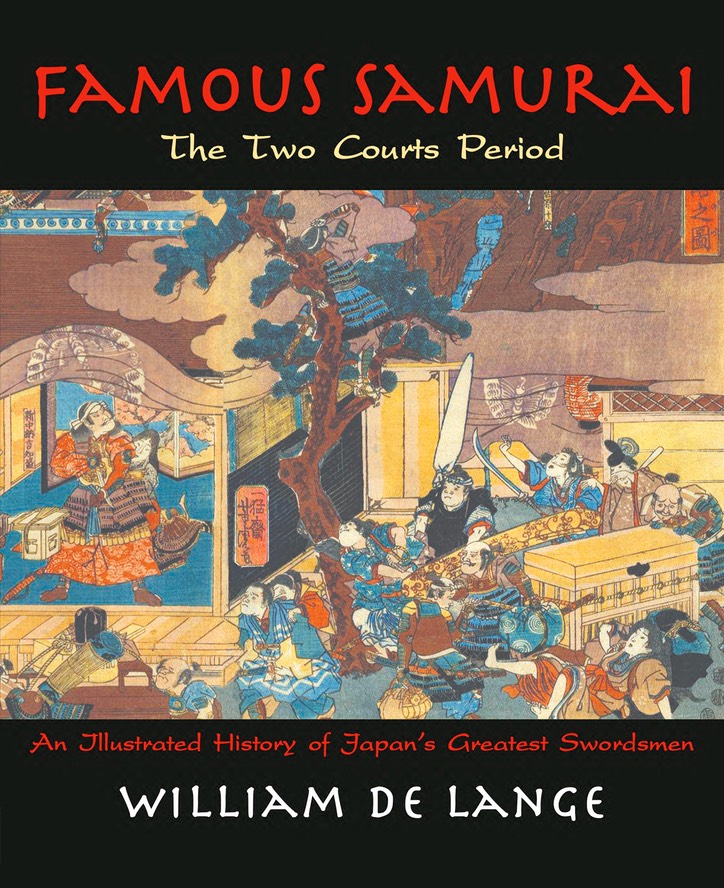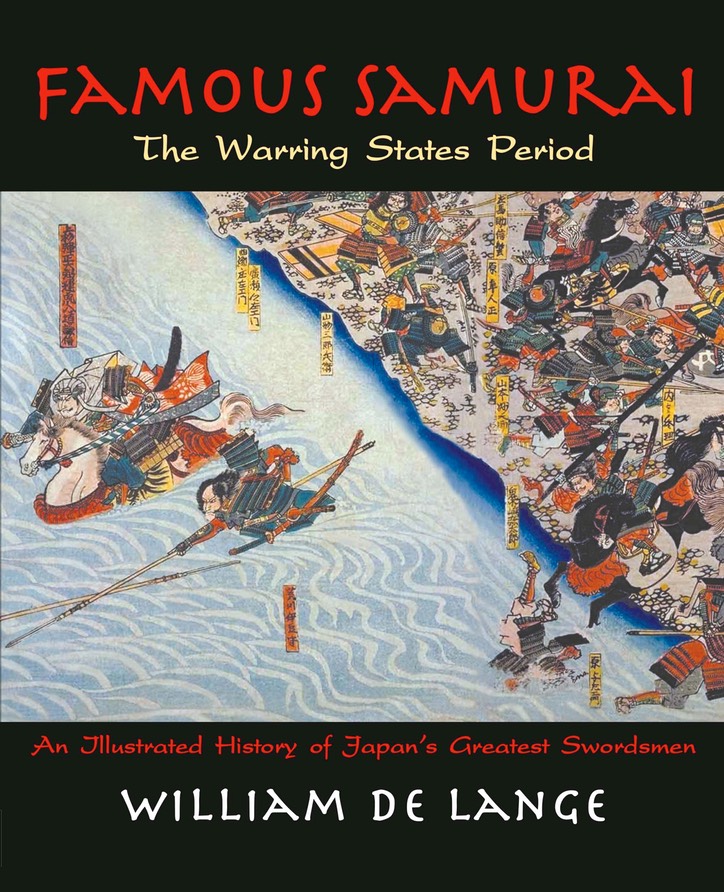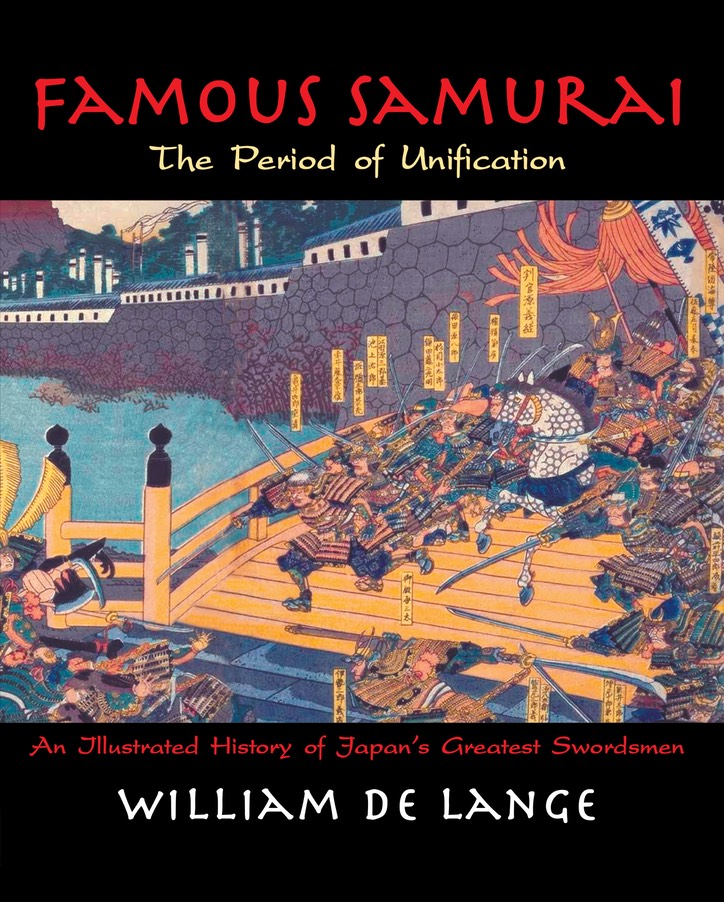Samurai Battles: The Long Road to Unification

Known from his collaboration on the Netflix documentary Age of Samurai, historian William de Lange returns to what he does best: highly anecdotal stories from one of the most exciting episodes in Japanese history: the Warring States period.
De Lange takes the reader right back to the 16th century’s closing decades. In the course of the ensuing journey, we witness the major battles fought by the country's three great unifiers: Oda Nobunaga, Toyotomi Hideyoshi, and Tokugawa Ieyasu.
Quoting directly and at length from a wide range of contemporary sources, De Lange paints events and figures like no other, ‘so richly rendered,’ according to one critic, ‘that you’d swear he was present at the time, taking notes.’
Samurai Battles is an epic account of a dramatic period in Japanese history—a period in which the whole country was consumed by the fire of civil strife that raged hardest on the field of battle.
170 pp, 7.5 x 9.25, Soft
Map, glossary, illustrations
History / Japanese history / Samurai
Published by TOYO Press / ISBN: 978-949-2722-232

The Illustrated History of the Yagyū Clan
The Yagyū clan stands out among Japan's countless medieval warrior clans as a clan especially renowned for its mastery of the art of swordsmanship. This first, fully illustrated Yagyū history in the English language recounts how, through a string of misfortunes beyond their control, the Yagyū clan first lost its independence, then its castle and domains, until finally its members .were thrown upon the mercy of a local temple. Yet it was in the very depth of those bleak and desperate years, that its leader, Yagyū Muneyoshi, discovered his true strength and began his clan's remarkable recovery—a recovery crowned with the ascendancy of his son, Munenori, to the exalted rank of daimyō.
It is perhaps no coincidence that the two Chinese characters that make up the name of Yagyū stand for the willow tree and life, or the giving of birth, for both seem to sum up perfectly the particular characteristics that helped propel this ancient clan to such exalted heights. Like the pliable willow tree, it was their resilience in the face of irresistible forces that enabled the Yagyū to outweather the raging storms of fortune and remain standing, alive and well, their spirit intact. In doing so, the Yagyū gave birth to an art of fencing that has survived for more than five centuries. Among the countless schools of swordsmanship brought forth by Japan’s feudal era, the Yagyū Shinkage-ryū still stands out for its sheer continuity
200 pp, 7.5 x 9.25, Soft
Map, glossary, illustrations
History / Japanese history / Samurai
Published by TOYO Press / ISBN: 978-949-2722-379
Famous Samurai: The Two Courts Period
The Two Courts Period (1333–92) was a turning point in Japan's medieval era—a time when an unbridgeable rift appeared in the fragile fabric of Japanese feudal society. On each side stood a separate imperial court, each with its own army and its own agenda. As the schism deepened and the positions hardened, one by one clans and domains were rent asunder until each and every man faced the terrible choice between loyalty and friendship.
Two such men were Nennami Okuyama Jion and Chūjō Hyōgo no Kami Nagahide, who faced each other from across the dazzling divide. Jion, an impoverished warrior monk who had lost his father through the treachery of a Bakufu official, joined the side of the loyalists, the forces fighting on behalf of the Southern Court. Nagahide, whose ancestors had stood at the cradle of feudal society and had risen to high rank within the Bakufu, was bound by duty to the Northern Court.
Their stories, set against the greater historical backdrop of ruthless political intrigue and vast military campaigns, describe the tragedy of civil war experienced at the personal level; they tell of loyalty, of betrayal, and of seemingly insurmountable setbacks. Yet the friendship between these two so disparate men, founded on their mutual love of swordsmanship and forged in the midst of a chaotic world, stands as moving testimony to courage that can have no equal in times of peace.
178 pp, 7.5 x 9.25, Soft
98 color illustrations, photos, maps, glossary, index
Japanese swords and swordsmanship / Japanese history / Martial arts
Published by TOYO PRess / ISBN: 978-1891640-940
Famous Samurai: The Warring States Period
The Warring States period (1467–1568) was the most destructive in Japan’s long history of civil strife. It began when the dearly won supremacy of the Ashikaga clan was squandered by a weak and indecisive ruler, allowing the jealous rivalry between local warlords to spiral irrevocably out of control. It was a time when thousands upon thousands of warriors either perished on the battlefield, or persevered simply on the strength of their martial skill. At the end of the day, only those with superior skill remained standing to survey the carnage and count the severed heads of their fallen foes. In spite of all the mayhem and bloodshed, they were also men with an inextinguishable moral core, who adhered with almost religious devotion to the bushidô dictates of duty, fidelity, decorum, indeed, even of benevolence.
Two such men were Iizasa Chōisai Ienao and Kami Izumi Nobutsuna. Both not only witnessed but actively participated in the dramatic events of the period at hand. Thus, Ienao served on the Shogunal guard when, following the outbreak of the Ōnin War in 1467, the capital Kyoto was reduced to ashes in a decade of trench warfare. And thus Nobutsuna had to witness how, in the terrible wave of anarchy that followed in its wake, all that his ancestors had toiled for was lost. Their story, told against the greater historical backdrop of ruthless political intrigue and vast military campaigns, is a story of the tragedy of civil war experienced at the personal level—it is a story of sacrifice, of blind devotion, of seemingly insurmountable setbacks. Yet it is at the same time a testimony to the kind of perseverance that can have no equal in times of peace.
178 pp, 7.5 x 9.25, Soft
86 color illustrations, photos, maps, glossary, index
History / Martial arts / Japanese swords and swordsmanship
Published by TOYO PRess / ISBN: 978-1-891640-957
Famous Samurai: The Period of Unification
The Period of Unification (1593–1615) was one of the great turning points in Japan's medieval era. After more than two centuries of civil strife Japan finally found its way back to peace and order under three successive rulers: Oda Nobunaga, Toyotomi Hideyoshi, and Tokugawa Ieyasu. The final drive came in the fall of 1600, when Japan's eastern and western warlords faced each other in the Battle of Sekigahara. It was a decisive battle, in which each and every man who called himself a warrior faced the stark choice between the forces of division and those of unification.
Two such men were Ono Jirōemon Tadaaki and Yagyū Tajima no Kami Munenori. Tadaaki, a swordsman from the Kanto, had lost his family and home to become a rōnin, a masterless samurai, forced to lead the life of a wanderer. Munenori hailed from the Home Provinces. His clan had first lost its castle, then its lands, until finally they were thrown upon the mercy of a local temple. Having lost everything, both men staked their lives and futures on the victory of the eastern forces. Their story, told against the greater historical backdrop of ruthless political intrigue and vast military campaigns, is a story of the tragedy of civil war experienced at the personal level—it is a story of loyalty, of betrayal, of seemingly insurmountable setbacks. Their courage in the face of overwhelming odds still stands as moving testimony to a the kind of perseverance and dedication that can have no equal in times of peace.
178 pp, 9.5 x 9.25, Soft
78 color illustrations, photos, maps, glossary, index
Japanese swords and swordsmanship / Japanese history / Martial arts
Published by TOYO PRess / ISBN: 978-1891640-54-4
Miyamoto Musashi: A Life in Arms
A Life in Arms traces Musashi's constant search for his own distinct style of swordsmanship; how he built on what he learned from his father and his uncles, how he perfected it on his musha shugyō, and how his Enmei-ryu evolved into the Niten Ichi-ryu, his unique art of fighting with two swords. Finally, it traces the remarkable gestation of The Book of Five Rings, his great legacy to posterity of a unique martial philosophy.
In the course of this highly readable account many of the convenient myths that have arisen around Musashi are debunked, while the more controversial aspects of the warrior's life that have been left hidden, perhaps deliberately, are uncovered: his deeply troubled relationship with his father, his whereabouts during the battle of Sekigahara, his role in the siege of Osaka castle, and the birth and death of an illegitimate child, an event that deeply influenced his art.
A Life in Arms shows how Musashi's path through life was shaped by strong personal traits: his reckless valor in the face of danger, his sensitive intelligence in the fields of art and architecture, his generosity toward peers and pupils, and his defiant stubbornness in old age. The complex yet human portrait that arises is a far cry from the accepted one-dimensional caricature of the swordsman.
222 pp, 7.5 x 9.25, soft
145 Illustrations, maps and charts, glossary, index
Japanese history / Swordsmanship / Martial arts
Published by TOYO PRess / ISBN:


